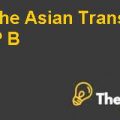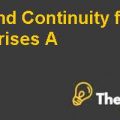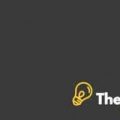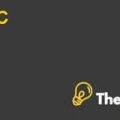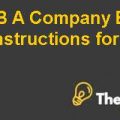
Models of The Change Process
During the course, many models have been discussed which can be used by organizations in implementing the change. As of my learning the two change models that are helpful in implementing change with a high chance of success are identified in my learning that are described below. These two models include the Lewin’s three-step change model and Kotter eight-step model.
One of these models was used in the case analysis for the British Airways as a group assignment, but the implementation was not effective. The two models, although help organizations in adopting and implementing change processes, but differ a great deal. Lewin’s model is very brief and has only three steps while Kotter’s eight-step model is much more descriptive and gives a better outline in implementing the change.
Lewin’s Three-Step Change Model
Lewin’s model as described by the name has three steps and helps organizations to stay stable and encounter the effect of the forces acting(Burnes, 2004). The steps included in this model are:
Unfreezing: This step is an indication of failure in the current state and can be and hint for the crisis.
Moving: Moving is the next step that occurs only when the organization is unfrozen. This step may involve structural change and developments in attitudes and behaviors.
Refreezing: This step with some modifications in the culture and structure along with policies is aimed to stabilize the organization.
These three steps are very brief and only aims at stabilizing the organization and don’t have the width a change process can offer. On the other hand, the process was a difficult one to understand as the point objects are clear, but not giving a detailed process to adopt the change. Step two and step three are a bit of a similar objective and the difference is not clear. Although the model is among the highest recommended ones, but as of my learning was concerned the model was not clearly understood that is why while implementing it in the case also created difficulty and resulted in a failure. In comparison to Kotter’s model, this model is not much more effective, according to me and is not successful for the majority of the organizations. On the other stand, this model only guides companies to stabilize into its current position and is not effective in gaining growth and become competitive.
Kotter’s Eight-Step Model
Kotter’s model was based on the model presented by Lewinbut gives a more detailed structure in adapting and implementing change. The steps in this model are more descriptive and according to my learning is concerned gave a more appropriate step for organizations to adapt a change process. The steps of the Kotter’s model include establishing a sense of urgency and find a reason for change that needs to be convincing.
The next step after unfreezing in this model talks about creating a coalition or choosing the leaders. In the next step a vision and strategic plan is developed followed by the clear communication of the developed vision. After communicating the vision, empower broad-based actions and eliminate the barriers and encourage risk taking. The last three steps talks about generating and creating short term wins, consolidating the gains and anchoring new approaches in the culture(Kotter, Leading Change, 1996).
As this model is much more descriptive and is also based on the Lewin’s model, so implementing this model would have been a good option in the case of British airways as it would have highlighted the issues and vision more clearly. The other benefit would have been a descriptive explanation of the change process that would have helped in giving the recommendations. In choosing a model while implementing a change process in organizations Kotter’s model is more appropriate as compared to Lewin’s. The suggestion is merely based on the descriptive nature of the Kotter’s model.
Types of Change
Types of changes are important to identify and as of my learning is concerned, this aspect is very important before proceeding in solving a case and was missing in the case solution. The types of changes are categorized into four types that include structural, cost, process and cultural change. The types are described on the basis of the learning attained from the course.
Structural change talks about a revamping of the entire organization and mostly happen due to mergers. In order to adapt this change a firm needs to establish a flexible structure that can easily adapt, change and implementation procedure don’t have to face many barriers.
A change concerning cost is mostly done to improve efficiency of the company and also the performance by cutting or reducing cost. This change is suggested as the best option for organizations seeking cost efficiency and improvement in performance. Reduction in the budget, elimination of unrelated, or unproductive activities and downsizing of employees are the changes expected to occur during a change regarding cost.................................
This is just a sample partial case solution. Please place the order on the website to order your own originally done case solution.


